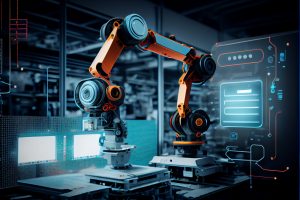In the dynamic world of financial investments, the integration of robotics and artificial intelligence (AI) marks a significant paradigm shift, particularly in the realm of long-term investment strategies. This technological revolution is reshaping our approach to investments, offering more personalized and efficient solutions.
The Emergence of Robotic Technologies in Finance
The finance sector has consistently been an early adopter of technological innovations. A report by PricewaterhouseCoopers suggests that approximately 77% of leaders plan to integrate AI technology into their operational systems by 2023. Robotics and AI are central to this transformation, especially in long-term investment planning.
AI and machine learning algorithms excel in analyzing vast amounts of data, identifying patterns, and making predictions with precision and speed beyond human capability. For example, J.P. Morgan’s LOXM program has demonstrated remarkable efficiency in executing trades, significantly reducing transaction costs.
Robo-Advisors: Personalizing Investment Strategies
Robo-advisors, powered by AI algorithms, have democratized investment advice, making it accessible beyond the traditionally wealthy clientele. These platforms use algorithms to create and manage a diversified portfolio based on an individual’s risk tolerance and investment goals. As of 2021, robo-advisors manage about $1.4 trillion in assets globally, a figure expected to grow significantly to $2.76 trillion in 2023.
Impact on Long-term Investment Strategies
Long-term investment strategies, particularly those focused on Individual Savings Accounts (ISAs), have been significantly impacted by the advent of robotics and AI.
Enhanced Risk Assessment and Management
Robotic technologies enable more sophisticated risk assessment models. By analyzing market trends and individual investment patterns, these technologies can tailor strategies that align with an investor’s long-term goals and risk appetite. This personalized approach is evident in services like a tailored ISA investment portfolio, which leverages such technologies to optimize returns.
Diversification and Asset Allocation
AI-driven platforms can dynamically adjust asset allocations in response to market changes, ensuring a well-diversified portfolio that withstands market fluctuations. For instance, during the market volatility of the COVID-19 pandemic, AI systems quickly adjusted portfolios to mitigate losses and capitalize on emerging opportunities.
Cost Efficiency
Robotic advisors reduce the need for human intervention, thereby lowering management fees. A study by Deloitte suggests that automated investment platforms could lead to a reduction in costs for firms and increase customer experience. This cost efficiency makes long-term investments like ISAs more accessible and appealing to a broader audience.
Real-world Examples and Success Stories
IBM Watson in Banking
IBM’s Watson is a powerful AI system used in various sectors, including banking. Watson Assistant is designed to enhance customer service by providing automated, AI-driven support. Banks like DBS Bank and Royal Bank of Canada have utilized Watson to enhance customer service and financial advice. It can handle customer inquiries, provide information on banking products and services, assist with transactions, and offer personalized financial advice. The tool is known for its ability to understand natural language, making interactions more user-friendly and efficient. Watson’s ability to process vast amounts of data helps in providing personalized financial insights, which can indirectly influence long-term investment decisions.
JPMorgan’s COIN Program
JPMorgan Chase’s Contract Intelligence (COIN) program uses machine learning for payment rail and deposit account ledger, enabling the transfer of U.S. Dollars held on deposit within J.P. Morgan. These programmable payments enable users to handle various automated tasks efficiently. One key feature is dynamic funding, which offers the ability to set specific rules for automatically topping up a bank account whenever there’s a shortfall. JPM Coin’s technology can support advanced payment types like DvP, PvP, and machine-to-machine payments, addressing challenges in traditional cross-border payments, and demonstrating the potential of AI in improving the accuracy and efficiency of financial operations, which indirectly affects investment management.
UBS’s AI-driven Risk Management
UBS, the Swiss multinational investment bank, employs AI and machine learning in risk management and fraud detection. Their AI systems analyze client portfolios to identify risks and optimize asset allocation, crucial for long-term investment stability. UBS’s use of AI in risk management demonstrates how robotics can enhance the security and performance of long-term investments.
AI-Driven Financial Planning by Personal Capital
Personal Capital, a digital wealth management company, uses AI to provide holistic financial planning services. While they offer investment management (investment tracking, retirement planning, savings, and budgeting), their primary focus is on providing a complete financial picture for individuals. Leveraging AI, Personal Capital analyses individual financial situations to deliver personalized investment recommendations, differentiating their services from direct investment platforms. Its retirement planning tools are designed to assist in future planning, setting it apart from direct investment platforms by offering a more integrated approach to managing one’s financial life.
The Future Landscape
The future of long-term investment planning with robotics and AI is promising. Continuous advancements in technology are expected to bring more sophisticated, personalized, and efficient investment solutions. The integration of blockchain technology and the potential of quantum computing are set to further revolutionize this field.
Bridging the Human-AI Gap
While robotics and AI bring efficiency and precision, the human element remains vital. A balanced approach that combines technological prowess with human insight and ethical considerations will define the success of long-term investment strategies in the future.
Conclusion
The integration of robotics and AI in long-term investment planning is a fundamental shift in the financial landscape. Understanding and embracing these technologies is crucial, recognizing their potential to make investment strategies more personalized, efficient, and accessible. The future of finance is being shaped by the incredible advancements in robotics and AI.

























